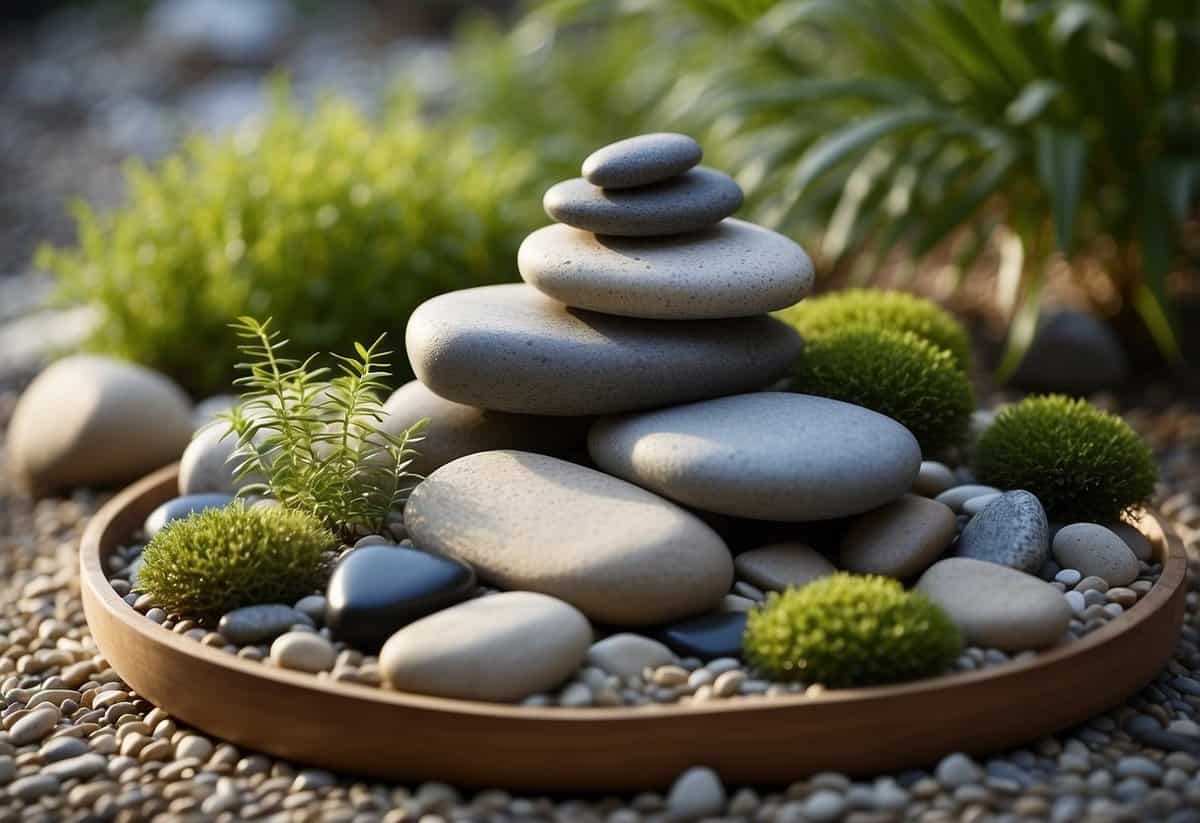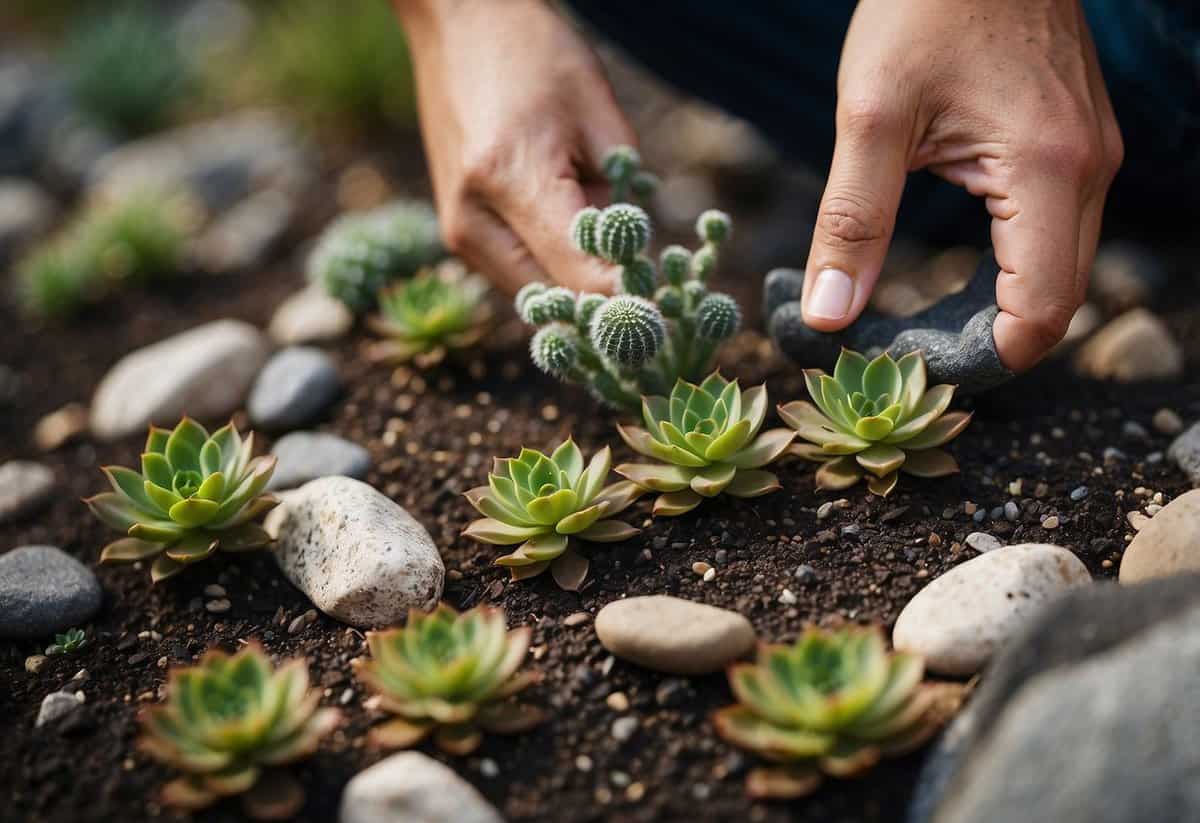Tips for Maintaining a Rock Garden: Easy Care and Fun Ideas
Rock gardens add a unique and natural touch to any landscape, often showcasing beautiful stones and hardy plants that create a tranquil environment. They are a great option for anyone looking to reduce yard maintenance while adding beauty and structure to their garden. Maintaining a rock garden can be simple and rewarding with the right knowledge and tips.

Whether you already have a rock garden or are planning to start one, learning how to keep it looking its best is essential. From choosing the right plants to simple upkeep, these tips will help you ensure your rock garden remains a stunning focal point all year round. With a little care, your rock garden can become a favorite spot in your outdoor space.
1) Choose the Right Rocks

The foundation of any rock garden is the rocks themselves. Go for rocks that match the style and feel you want in your garden. Natural, local stones blend well with the surroundings.
Consider using a mix of large and small rocks. Large rocks provide structure, while smaller ones fill gaps. Think about using flat stones for pathways.
Always check the rocks for stability. Wobbly rocks can be unsafe and look out of place. When you’re ready to start, you can learn more about choosing the right rocks.
2) Plan your layout

First, decide where you want your rock garden. Choose a sunny spot with good drainage to keep your plants healthy.
Next, think about the size and shape of your garden. Use a mix of large boulders and smaller rocks for variety.
Create spaces between the rocks for planting. This will give your garden a balanced look and ensure plants have room to grow.
Finally, consider adding paths or stepping stones for easy access and visual interest.
3) Use weed barrier fabric

Using weed barrier fabric helps keep your rock garden neat. Start by clearing and leveling the soil. Remove any twigs, stones, or debris that can damage the fabric.
After that, lay out the fabric. Make sure to overlap the edges by about 6-8 inches to stop weeds from sneaking through. You can learn more about it at Better Homes & Gardens.
Finally, secure the fabric with landscape pins. This keeps it in place, so you don’t have to worry about it shifting.
4) Consider drainage

Drainage is vital for a healthy rock garden. Make sure the soil drains well to prevent waterlogging, which can harm plants.
Choose a spot that doesn’t collect too much water. If your area has heavy clay soil, mix in sand or gravel to improve drainage.
Another tip is to create small slopes or berms. This helps water flow away from plant roots. Avoid areas prone to excessive moisture.
Proper drainage keeps your rock garden vibrant and thriving. For more details on avoiding waterlogging, check this site.
5) Select suitable plants

When choosing plants for your rock garden, look for ones that thrive in rocky, well-drained soil. Succulents and drought-tolerant plants are perfect because they need less water and care.
Consider using rock cress, which grows well in full sun to light shade. This plant’s low, mat-forming growth will cover large areas nicely.
You can also add perennials, ornamental grasses, and small shrubs for vertical height. Mixing in sturdy bulbs like narcissus or wild tulips will provide a lovely contrast.
6) Layer your rocks

Start by using larger rocks as the base. These provide a strong foundation.
Next, add some soil between the larger rocks. This helps keep the structure stable and creates pockets for plants.
Place smaller rocks on top. This adds texture and interest.
Remember to leave spaces for your plants. You want them to have room to grow and flourish in your rock garden.
7) Incorporate water features

Adding water features to your rock garden can create a soothing atmosphere. A small pond or cascading waterfall can enhance the natural beauty.
Water features can attract birds and pollinators, bringing life to your garden. You might consider a bubbling fountain for a gentle, calming sound.
Ensure that the water feature blends naturally with the surrounding rocks for a cohesive look. A well-placed water feature can make your garden feel more vibrant and tranquil.
8) Add Decorative Elements

Incorporate decorative elements to make your rock garden more inviting. Consider adding a birdbath or small water feature. These not only look great but also attract wildlife.
Use decorative rocks and stones to create patterns or accents. You can also place garden statues or ornaments strategically. These elements add a personal touch to your garden space and highlight your creativity.
9) Maintain with Regular Weeding

Regular weeding is crucial for keeping your rock garden neat. Walk through your garden often and pull any weeds you see. Make sure to remove the entire root so they don’t grow back.
Use a small trowel to help get the root out. This will prevent weeds from overtaking your beautiful plants and rocks.
10) Mulch with Stone Chips

Using stone chips as mulch in your rock garden can add a unique look to your space. Stone chips come in different sizes and colors, allowing you to create a custom design.
Stone chips help with water drainage. They let rainwater run through to the plants’ roots, preventing water from pooling.
They also reduce weed growth. A layer of stone chips makes it harder for weeds to sprout, saving you time and effort.
Finally, stone chips are long-lasting. Unlike organic mulch, they don’t decompose or need frequent replacement, making them a low-maintenance option.
Choosing the Right Rocks

Selecting the appropriate rocks is crucial for your rock garden. This includes picking the right types of rocks and finding the best places to source them.
Types of Rocks
Different rocks bring unique textures and colors to your rock garden. Granite is popular for its durability and variety of colors. Limestone is easy to shape and has a light color.
Sandstone offers a range of colors and a softer texture. Slate is great for creating layers with its flat, sleek look. Basalt provides a dark color contrast and is very sturdy.
Consider using a mix of these to create an interesting visual landscape. Look for rocks that complement the plants and other features in your garden.
Sourcing Your Rocks
There are several ways to find the perfect rocks for your rock garden. Local garden centers often have a variety of rocks. Check their stock and choose ones that match your needs.
Quarries are another great option if you need larger quantities or specific types. Landscaping companies can also help and may deliver directly to your home.
For a more budget-friendly option, you can collect rocks yourself from nature. Make sure to check local regulations to ensure it’s allowed. Connecting with local gardeners can also be a good way to trade or purchase unique stones.
Soil and Drainage Management

Proper soil and drainage management are key to maintaining a healthy rock garden. The right soil mix and effective drainage contribute to robust plant growth and an attractive landscape.
Choosing the Right Soil
Selecting the appropriate soil is crucial for your rock garden. Many rock garden plants, especially alpine and drought-tolerant varieties, thrive in sandy soil with excellent drainage. Mixing sand or gravel into your garden soil can help improve its structure and drainage capabilities.
Add compost to enrich the soil with nutrients. This not only boosts plant health but also supports beneficial microbial activity. Regularly amending your soil keeps it in top condition. Dig down about 6 inches and mix in compost and sand. This ensures the roots receive the nutrients and drainage they need.
Ensuring Proper Drainage
Good drainage prevents water from accumulating around your plants, which can cause root rot. Creating raised beds or mounds can help. These structures allow excess water to flow away from the plant roots effectively.
Laying down a base layer of coarse gravel or small rocks beneath the soil can further aid in drainage. This method helps water move through and out of the soil quickly. Regularly check for areas where water tends to pool and address these spots by adjusting the landscape or adding more draining materials.
Incorporating a 2-inch layer of mulch can also reduce evaporation and soil erosion, keeping your garden in better shape. Mulch acts as an insulator, maintaining moisture levels without causing waterlogging. Keep your rock garden weed-free to prevent unwanted plants from competing for resources. Frequent inspections and timely interventions are essential to maintain proper drainage and soil health.
Maintaining Your Rock Garden

Keeping your rock garden looking its best involves regular maintenance, such as controlling weeds and following tips for different seasons. Here are some friendly suggestions to help you.
Weed Control
Weeds can be a real nuisance in a rock garden. Regularly inspecting your garden is essential. Walk through your garden every week to spot any unwanted plants.
To remove weeds, pull them out by hand or use a handheld weeder. Pulling during or after rain makes it easier because the soil is loose. Be careful not to disturb the rocks.
Applying a layer of mulch or pea gravel can also help prevent weeds. These materials block sunlight from reaching the soil, suppressing weed growth. You can use landscape fabric under the rocks for added protection.
Weed control is an ongoing task, so stay diligent to maintain the clean look of your garden.
Seasonal Care Tips
Caring for your garden varies by season. In spring, focus on planting new plants and adding compost to the soil. This provides nutrients needed for healthy growth.
During summer, watering is crucial. Ensure your garden gets enough moisture, especially during dry spells. Drip irrigation can be helpful to conserve water.
In the fall, clean up fallen leaves and debris. This helps prevent mold and pests. Consider adding a layer of mulch to protect the soil.
Finally, in winter, protect vulnerable plants with covers or bring potted plants indoors. Maintain proper drainage to avoid water pooling and freezing around the rocks.
By following these tips, you’ll keep your rock garden vibrant and healthy year-round.







